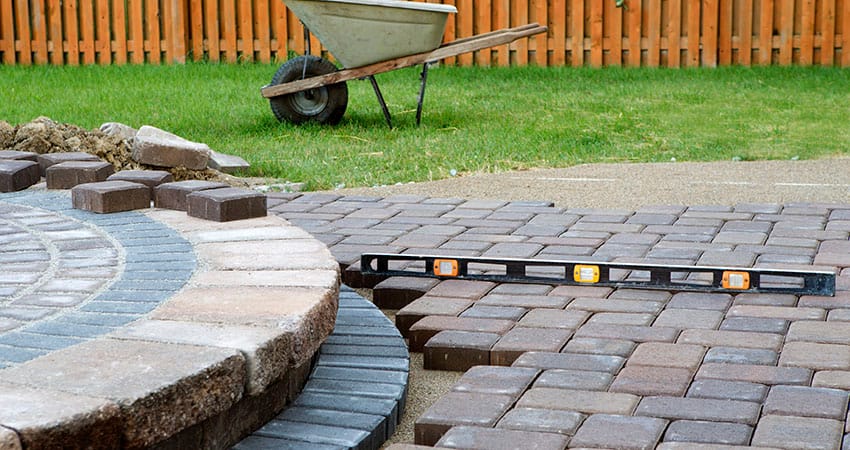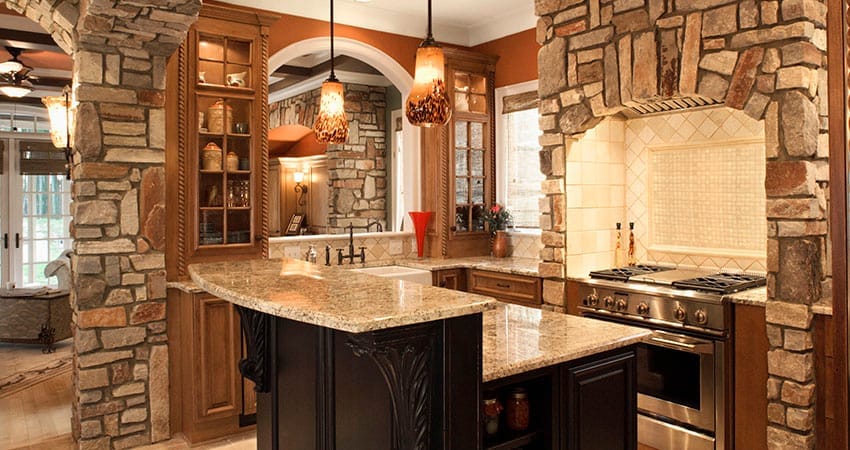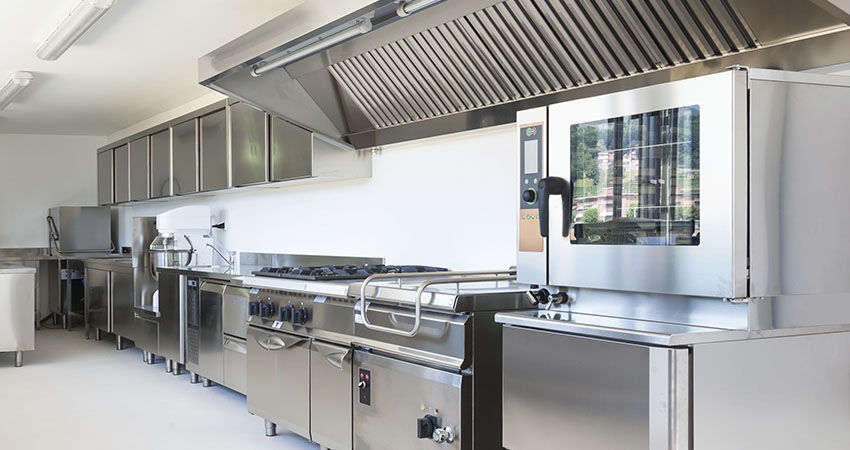Masonry has long been a cornerstone of architectural design, offering durability, versatility, and timeless appeal. In recent years, advancements in technology and materials have led to innovative masonry solutions that are revolutionizing modern exterior architecture. From cutting-edge construction techniques to sustainable building practices, this article explores the latest trends and innovations in masonry for contemporary building projects. It will help you make the best decisions before choosing patio contractors for your project.
High-Performance Masonry Materials
Modern exterior architecture demands materials that not only offer aesthetic appeal but also meet high-performance standards for durability, energy efficiency, and sustainability. Innovations in masonry materials have led to the development of high-strength concrete blocks, engineered stone veneers, and sustainable brick alternatives. These materials offer improved strength, weather resistance, and thermal performance, making them ideal for modern construction projects seeking to achieve both form and function.
Engineered Masonry Systems
Engineered masonry systems combine traditional masonry materials with advanced construction techniques to create efficient, cost-effective building solutions. Examples include precast concrete panels, modular masonry units, and insulated concrete forms (ICFs). These systems offer benefits such as reduced construction time, enhanced structural integrity, and improved energy efficiency. By prefabricating components off-site and assembling them on-site, engineered masonry systems streamline the construction process and minimize waste, making them increasingly popular for modern exterior architecture.
Thin Brick and Stone Veneers
Thin brick and stone veneers provide the aesthetic appeal of traditional masonry without the weight and bulk of full-size bricks or stones. Many outdoor fireplace builders Long Island use them. These lightweight, flexible materials can be adhered directly to existing surfaces, such as concrete walls or plywood substrates, using thin-set mortar or adhesive. Thin brick and stone veneers offer versatility in design, allowing architects and designers to create custom patterns, textures, and colors for modern exterior facades. Additionally, they are more cost-effective and environmentally friendly than traditional masonry materials, making them an attractive option for sustainable building projects.
Sustainable Masonry Practices
In response to growing concerns about environmental impact and resource depletion, sustainable masonry practices are gaining traction in modern exterior architecture. These practices focus on minimizing waste, conserving energy, and using eco-friendly materials throughout the construction process. Examples include incorporating recycled materials into masonry products, utilizing locally sourced materials to reduce transportation emissions, and designing buildings with passive solar features to maximize energy efficiency. By adopting sustainable masonry practices, architects and builders can create buildings that are not only visually striking but also environmentally responsible.
Digital Design and Fabrication
Advancements in digital design and fabrication technologies have revolutionized the way masonry is used in modern exterior architecture. Computer-aided design (CAD) software and building information modeling (BIM) tools allow architects to visualize and simulate complex masonry structures with precision and accuracy. Additionally, computer-controlled manufacturing techniques such as 3D printing and robotic bricklaying enable the rapid prototyping and fabrication of custom masonry elements. These digital design and fabrication technologies empower architects and designers to push the boundaries of masonry design, creating innovative and unique exterior architecture solutions.
Adaptive Reuse and Historic Preservation
Discuss the role of masonry in adaptive reuse and historic preservation projects, where existing buildings are renovated or repurposed for modern use while preserving their historical character and architectural significance. Masonry materials such as brick, stone, and terracotta are often integral to historic buildings, requiring specialized restoration techniques and craftsmanship to maintain their authenticity. Explore innovative approaches to masonry restoration, such as laser cleaning, consolidation, and matching techniques, that allow architects and conservationists to breathe new life into old structures while honoring their heritage.
Resilient Design and Disaster Resistance
Examine the role of masonry in resilient design and disaster resistance, particularly in regions prone to natural disasters such as earthquakes, hurricanes, and wildfires. Masonry construction offers inherent strength and durability, making it well-suited for withstanding extreme weather events and mitigating damage to buildings and infrastructure. Discuss innovative masonry techniques and materials, such as reinforced masonry walls, seismic retrofitting, and fire-resistant coatings, that enhance the resilience of buildings and communities in the face of environmental hazards, and roof maintenance.
Artistic Expression and Customization
Explore the artistic potential of masonry as a medium for creative expression and customization in modern exterior architecture. Masonry materials lend themselves to intricate patterns, textures, and sculptural elements that can enhance the visual impact of buildings and create unique architectural identities. Highlight examples of contemporary masonry projects that showcase innovative design techniques, such as relief carving, decorative brickwork, and patterned facades, that elevate the aesthetic appeal of exterior spaces and engage with their surrounding environments.
Health and Well-being Benefits
Examine the health and well-being benefits of masonry construction in modern exterior architecture, particularly in relation to indoor air quality, thermal comfort, and acoustic performance. Masonry materials such as brick and stone have natural properties that contribute to a healthy indoor environment, including breathability, moisture regulation, and sound insulation. Discuss research findings and case studies that demonstrate the positive impact of masonry construction on occupant health, comfort, and productivity, and highlight strategies for incorporating masonry elements into building designs to optimize human well-being.
Community Engagement and Social Impact
Discuss the role of masonry in fostering community engagement and social impact through collaborative design and participatory building processes. Masonry construction projects offer opportunities for local artisans, craftsmen, and community members to contribute their skills and expertise to the creation of shared public spaces and landmarks. Explore initiatives that promote community-led masonry projects, such as public art installations, community gardens, and urban revitalization efforts, that empower residents to shape their built environment and strengthen social connections within their neighborhoods.
Cultural Heritage and Identity
Explore the cultural significance of masonry architecture and its role in preserving cultural heritage and identity in modern society. Masonry buildings are often emblematic of local traditions, craftsmanship, and architectural styles, reflecting the unique cultural identity of communities around the world. Discuss the importance of safeguarding and celebrating masonry heritage through conservation efforts, heritage preservation initiatives, and educational programs that promote awareness and appreciation of historic masonry architecture. Highlight examples of iconic masonry landmarks and UNESCO World Heritage sites that serve as enduring symbols of cultural heritage and identity.
Future Trends and Innovations
Anticipate future trends and innovations in masonry technology and design that will shape the landscape of modern exterior architecture in the years to come. Explore emerging technologies such as 3D printing, robotic fabrication, and advanced materials science that are revolutionizing the way masonry is designed, fabricated, and constructed. Discuss the potential for masonry to integrate with other building systems, such as smart sensors, renewable energy technologies, and modular construction methods, to create sustainable, resilient, and adaptable buildings for the future. Encourage architects, engineers, and designers to embrace innovation and creativity in their approach to masonry architecture, while preserving the timeless qualities and craftsmanship that define the art of masonry.
Conclusion
Innovations in masonry materials, construction techniques, and sustainable practices are reshaping the landscape of modern exterior architecture. From high-performance masonry materials to engineered systems and digital design tools, architects and builders have a wealth of innovative solutions at their disposal for creating striking and sustainable buildings. By embracing these advancements, patio builders Long Island can design and construct exterior spaces that are not only aesthetically pleasing but also durable, efficient, and environmentally responsible.



